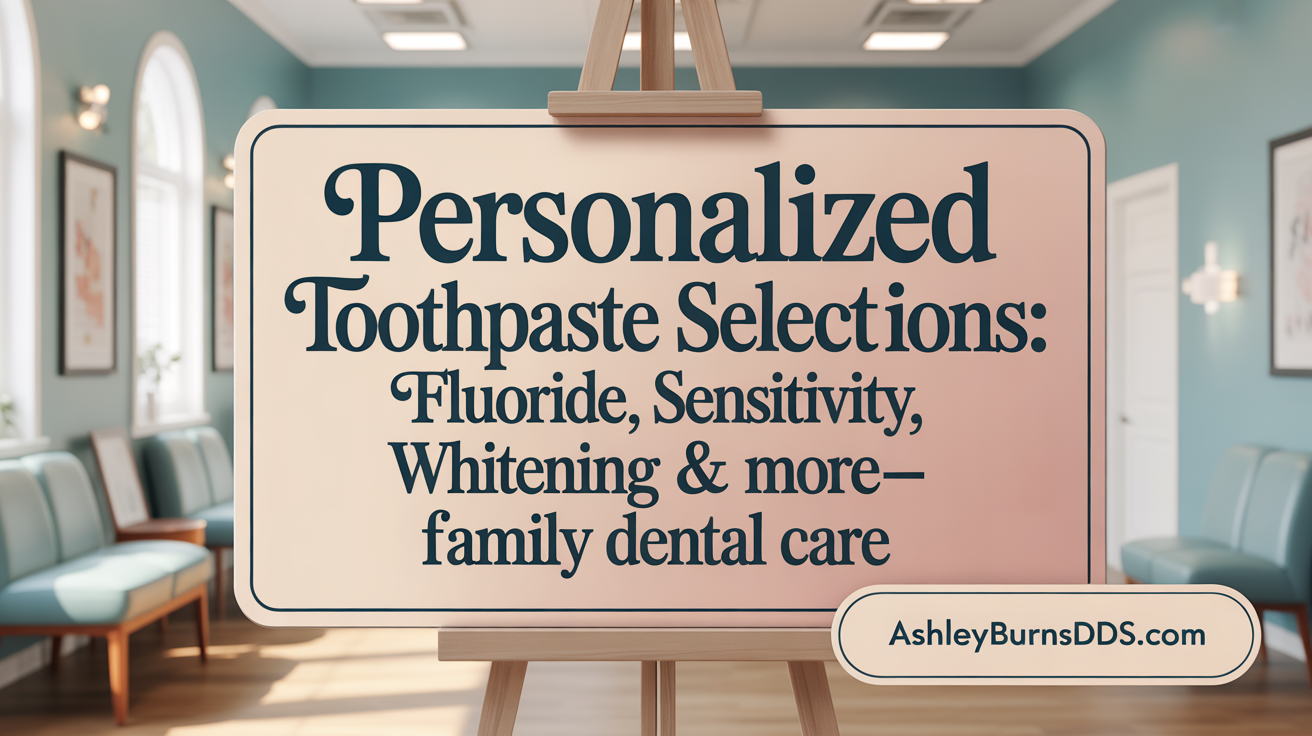Understanding the Essentials of Oral Hygiene Tools
Optimal oral health begins with choosing the right tools—specifically, the toothbrush and toothpaste tailored to your individual needs. This guide walks you through expert recommendations and points of consideration to help you make informed decisions that promote long-lasting oral wellness.
Selecting the Ideal Toothbrush: Features and Functionality

How do I choose the right toothbrush for optimal oral care?
Choosing the right toothbrush is essential for maintaining good oral health. Start by selecting a toothbrush with a small, compact, round head. This design makes it easier to reach all areas of your mouth, especially the back teeth that are often harder to clean.
Next, focus on bristle type. Most dental professionals recommend soft bristles because they are gentle on gums and enamel but still effective at removing plaque. Medium or hard bristles can be overly abrasive, potentially leading to gum recession or enamel erosion over time.
Handle design also matters. Opt for a handle that feels comfortable and provides a non-slip grip. An ergonomic handle allows for better control and thorough cleaning, especially for people with limited dexterity.
When choosing between manual and electric toothbrushes, both can be effective if used properly. Electric toothbrushes often feature built-in timers and oscillation technology that can enhance plaque removal, especially for those who struggle with proper brushing techniques or have dental appliances.
Additionally, verify if the toothbrush has the ADA Seal of Acceptance. This ensures that the product meets safety and efficacy standards.
To maintain optimal oral health, replace your toothbrush or brush head every three to four months. Frayed bristles diminish cleaning effectiveness and can harbor bacteria.
Proper care involves rinsing your toothbrush after use, storing it upright in a well-ventilated area, and avoiding sharing brushes to prevent cross-contamination.
Considering these features—size, bristle softness, handle comfort, and replacement—helps you select a toothbrush tailored to your specific needs and promotes healthier teeth and gums.
Manual vs Electric Toothbrushes: Making the Right Choice

Does the type of toothbrush matter for oral health?
The choice between manual and electric toothbrushes can influence oral health, but it's not the only factor to consider. Both types can effectively remove plaque and prevent cavities when used correctly. Electric toothbrushes often feature advanced technology like oscillating or rotating heads, timers, and pressure sensors that can help improve brushing consistency and technique.
While manual brushes are accessible and affordable, electric models can be easier for individuals with limited dexterity, such as those with arthritis or braces. The effectiveness of either type depends largely on user habits, including brushing duration and technique. Soft bristles are recommended for both, as they are gentle on gums and enamel. Overall, the most important aspect is selecting a toothbrush that you will use properly and comfortably, ensuring regular and thorough brushing.
What factors should be considered when choosing between manual and electric toothbrushes?
When deciding which toothbrush suits you best, consider several factors. Effectiveness in plaque removal is a major benefit of electric toothbrushes, especially with features like built-in timers and pressure sensors that encourage proper brushing habits. These tools are particularly useful for individuals with orthodontics, limited mobility, or those who tend to brush too vigorously.
Manual brushes, on the other hand, are less expensive, widely available, and highly portable, making them a practical option for travel and casual use. Comfort and handling are also important; handle design, size, and bristle softness should align with personal preferences. Both types need regular replacement—every three to four months—to maintain effectiveness.
In summary, the best toothbrush is the one you will use correctly and consistently. For those seeking ease of use and enhanced cleaning features, electric options may be advantageous. Conversely, for simplicity and affordability, manual brushes remain effective when used properly. Consulting your dentist can help you choose the best fit based on your specific oral health needs.
Navigating Toothpaste Choices for Personalized Oral Care

Why Is the Importance of Fluoride in Toothpaste Critical?
Fluoride plays a vital role in strengthening enamel, the tooth’s outer layer, making it more resistant to acid attacks from bacteria and sugary foods. Regular use of fluoride toothpaste is one of the most effective ways to prevent cavities and decay. When shopping for toothpaste, ensuring it has the ADA Seal of Acceptance guarantees the product has been tested and meets safety standards.
Formulations for Sensitivity, Whitening, and Tartar Control
To address specific oral health needs, various types of toothpaste are available. For sensitive teeth, formulas containing ingredients like potassium nitrate or stannous fluoride help reduce discomfort by blocking nerve signals. Whitening toothpastes typically include gentle abrasives and peroxide compounds to remove surface stains — but they should be used cautiously, especially if your teeth are sensitive. Tartar control toothpastes contain agents such as pyrophosphates or zinc citrate to help prevent tartar buildup, which can lead to more serious gum problems.
The ADA Seal of Acceptance for Toothpaste
Always look for the ADA Seal of Acceptance when choosing a toothpaste. This seal signifies that the product has undergone rigorous testing for safety and effectiveness, covering ingredients, formula stability, and benefits. Opting for products with this certification can provide peace of mind and ensure optimal oral health benefits.
Natural Toothpaste Options
For those preferring natural ingredients, there are toothpastes formulated with herbal extracts, charcoal, or organic components. These products often avoid artificial colors, flavors, and preservatives. However, it is essential to verify that natural toothpastes still contain fluoride if cavity prevention is a priority, as some natural options lack this key ingredient.
Age-Appropriate Toothpaste Guidelines
Children under 3 years old should use a small smear of fluoride toothpaste — about the size of a grain of rice — to prevent accidental ingestion. For kids aged 3 and older, a pea-sized amount is appropriate. It’s crucial to supervise children during brushing and encourage proper spitting to avoid swallowing excess fluoride, which can cause fluorosis if misused.
| Consideration | Recommendations | Additional Details |
|---|---|---|
| Fluoride presence | Yes | For cavity prevention and enamel strengthening |
| Sensitive teeth | Use kaolin, potassium nitrate, stannous fluoride | Reduces discomfort by nerve block |
| Whitening products | Peroxide and mild abrasives | Use cautiously with sensitive teeth |
| Tartar control | Pyrophosphates, zinc citrate | Prevents plaque build-up |
| Natural options | Herbal, organic, charcoal | Check fluoride content |
| Children’s needs | Specially formulated, small amounts | Supervise to prevent ingestion |
By thoughtfully selecting toothpaste tailored to your specific oral health conditions and following professional guidelines, you can maintain a healthier and more comfortable smile.
Dentist-Recommended Toothbrush Features and Brushing Techniques

What toothbrush features do dentists recommend?
Dentists generally advise choosing electric toothbrushes with specific features that support better oral hygiene. Essential options include pressure sensors that alert you if you are brushing too hard, which helps prevent gum damage. Timers built into the device ensure you brush for the recommended two minutes, promoting thorough cleaning.
Many recommended models are oscillating-rotating or sonic, as they effectively remove plaque with gentle motions. For those with sensitive teeth or gums, soft or gentle brush heads are preferable to avoid irritation. Modern electric toothbrushes often come with smart technology—Bluetooth connectivity and app alerts—that guide users for optimal brushing techniques.
In addition, ergonomic, easy-to-hold handles and long-lasting rechargeable batteries contribute to better control and convenience. By selecting a toothbrush with these features, users can maintain safer, more effective oral hygiene routines.
What is the recommended brushing technique to ensure no areas are missed?
To cover all areas of your mouth efficiently, adopt a systematic brushing approach. Begin by dividing your mouth into four quadrants—upper right, upper left, lower right, and lower left—and dedicate about 30 seconds to each section.
Hold your toothbrush at a 45-degree angle toward the gum line. Use gentle, circular motions to clean the outer, inner, and chewing surfaces of each tooth. This technique ensures debris and plaque are loosened without damaging the enamel or gums.
Before brushing, use interdental cleaning tools such as floss or interdental brushes to clear the spaces between teeth. This preparation makes brushing more effective by removing larger particles first.
Utilize a soft-bristled toothbrush and replace it every three to four months. Consider electric models with built-in timers to help you adhere to the recommended duration.
Finish your routine by gently brushing your tongue to remove bacteria and freshen your breath. Rinse thoroughly, and consider mouthwash as an additional step for complete oral cleanliness. Following these practices promotes comprehensive coverage and optimal oral health.
Oral Hygiene Habits and Additional Considerations for Effective Care
What is the 3-3-3 brushing rule for maintaining good oral hygiene?
The 3-3-3 rule recommends brushing your teeth three times daily, ideally after meals, with each session lasting at least three minutes. This routine emphasizes the importance of brushing within three minutes after eating to effectively remove food particles and reduce plaque accumulation. Implementing these habits helps prevent cavities and gum disease.
In addition to brushing, the rule advocates for the use of flossing and interdental cleaning to reach areas between teeth that brushes might miss. Using a gentle, circular brushing technique at a 45-degree angle toward the gum line enhances cleaning effectiveness while protecting gums. Though maintaining this strict schedule can be challenging, consistency is crucial for long-term oral health, and incorporating tools like powered toothbrushes and mouthwash can be beneficial.
Overall, adopting the 3-3-3 rule creates a disciplined approach to oral hygiene that supports healthier teeth and gums.
Empower Your Smile with Informed Choices
Choosing the right toothbrush and toothpaste tailored to your unique oral health needs is essential for effective daily care and long-term dental wellness. Whether you prefer manual or electric brushes, prioritize soft bristles, suitable head sizes, and proven toothpaste formulas containing fluoride. Incorporate recommended brushing techniques and maintain consistent hygiene habits, including regular replacement of toothbrushes and professional dental consultations. These informed choices empower you to maintain healthy teeth and gums, ensuring a confident and radiant smile for years to come.
References
- Choosing the Right Toothbrush and Toothpaste - Dynamic Dental
- The Ultimate Guide to Selecting the Right Toothbrush
- How to Choose the Right Toothbrush and Toothpaste - Lenker Dental
- Toothbrushes | American Dental Association
- Choosing The Right Toothbrush | Colgate®
- How to Choose the Right Toothbrush and Toothpaste
- How to Choose the Right Toothbrush - Dentist in Encinitas
- Choosing a Toothbrush and Toothpaste | Blog in Grand Haven, MI
- How to Choose the Right Toothbrush and Toothpaste
